The Legend of Zelda: A Link Between Worlds (Nintendo 3DS) Review
By Az Elias  04.12.2013
04.12.2013

A series with a rich history behind its name, each game in The Legend of Zelda franchise is crafted with immeasurable care and quality, taking years to develop and, occasionally, taking even more still to finally land in fans' hands. Whilst the series remains one like no other and continues to offer some of the greatest adventures in video games, it has increasingly become much more opinionated over the last decade or so, due in part to formula repetition and questionable control and gameplay mechanics. Whether the Nintendo EAD-developed The Legend of Zelda: A Link Between Worlds is a safer approach taken to reclaim lost fans from the 80s and 90s is a thought for consideration, but this return to the traditional top-down viewpoint of classic 2D Zelda has forced many a fan—old and new—to take notice. Is this the start of a new beginning for the franchise?
It is not often in The Legend of Zelda series that players are given the opportunity to return to the same world from a previous game. In fact, in revisiting Hyrule from A Link to the Past, this is the first time it has been possible to explore the exact same map in a canon sequel. With the Super NES game's arrival in the West being in 1992, it is a far more acceptable and less risky move to make than basing the game off of a much more recent title in the franchise. It is a long enough period—over two decades, actually—that, for long-timers that are still engaged with the adventures of the hero in green, and indeed for some that may have stopped playing the series for a number of years, it will rekindle a lost feeling of love that may have gone astray, even if just ever so slightly, between player and series.
Even so, it is still a rather ambitious move, especially as the series, as mentioned, continues to present entire new worlds and variations of Hyrule in each subsequent game. Since this is the first of its case, though, it may be no small assumption to make that any fan of A Link to the Past would be giddy with excitement at the prospect of returning to this setting that has held so many memories from its time being traversed and excavated for every tiny secret during its 16-bit days.

A Link Between Worlds is a nostalgia trip—quite possibly one of the best nostalgia trips that a Legend of Zelda fan will endure in his or her time with the series. From waking up in the very same house at the start of the game, to the resting place of the Master Sword in the Lost Woods, to those pesky vultures that swoop down on Link in the desert, A Link to the Past is represented almost identically in this game, which is set centuries after it, chronologically. Practically every location of the overworld can be explored straight from the get-go, granting curious players the opportunity to see what has changed, what hasn't changed, and just how much everything was as they remembered it in the early 90s classic.
How much of the overabundance of nostalgia masks what is new in A Link Between Worlds, though? Has much been done at all to create a title that survives on its own merits, and not of those of one of the defining 2D adventure games of its time? Well, it is true that A Link Between Worlds' main appeal comes from the fact it is a true sequel to A Link to the Past, but some bold new steps and a touch of Nintendo innovation have been applied to ensure that this is not simply a lazy overworld copy-and-paste job with a few new dungeons thrown in.
Obviously, what will remain decidedly similar is a story featuring a certain young man in green, the Princess of Hyrule, and an antagonist seeking the power of the Triforce. Whilst 2D Zelda games have progressively become more story-focused, what is presented with A Link Between Worlds is amusing, but not as heavily forced onto players as compared to other top-down entries, such as Oracle of Seasons, Oracle of Ages and The Minish Cap. Undoubtedly, many fans love the idea of more depth to the plot in these games, and even though it is here and certainly not overly serious, it does feel more like an advancement of A Link to the Past in this regard, and less like the titles that appeared on the Game Boy Color and Game Boy Advance.
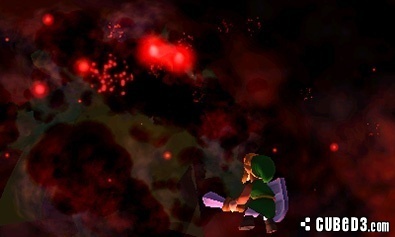
However, this is by no means a fault. To some it may be, but this approach allows for a free-flowing adventure with fewer stoppages, which, in turn, grants far bigger emphasis on continued exploration and, of course, puts greater importance on the dungeons—the core part of any Legend of Zelda game.
The correlation between exploration and the dungeons delivered here is rather new territory for Nintendo and the series, but it is utterly welcome. Linearity is a term brought up often when each new Legend of Zelda game releases, with the forced nature of completing dungeons in fixed orders wearing thin now. One of the most pleasing changes to the system in A Link Between Worlds is finally having that ability to complete dungeons in almost any order. With the option to now rent items for the first time since the Japan-only Super NES Satellaview game, BS The Legend of Zelda: Ancient Stone Tablets, level designs that utilise a broader range of ideas now exist, instead of mostly just the item found in a chest in its respective dungeon in past games. It makes for a less predictable and more exciting set of puzzles that do manage to impose a few challenging situations. Although series veterans are unlikely to be troubled too much, a special item can be used at any time that reveals ghosts that can provide hints for the current room at the cost of Nintendo 3DS Play Coins—a pleasant optional feature to offer a helping hand.
What sets A Link Between Worlds further apart from any other game in the series, also, is the ability to take the form of a drawing and merge into walls. It is only possible through the transformation of what was previously a strictly flat and two-dimensional world on the Super NES, to a fully three-dimensional Hyrule on the Nintendo 3DS. Still presented in the classic top-down viewpoint, this is a game that has been redesigned into 3D, offering a completely new perspective on the familiar world. Through the ability to merge into the landscape, and with the camera shifting to accommodate where Link does this, Hyrule becomes a totally new world to explore. On the overworld, it is a means to locate and access new dungeons and reach otherwise inaccessible cliffs that hold caves and secrets; whilst inside dungeons, it is a core gameplay mechanic, where puzzles, platforms and entire levels themselves are crafted with Link's astonishing talent in mind. For a skill this bizarre, it is executed so naturally that it doesn't feel out of place in not just this once-trodden Hyrule, but the entirety of the game.
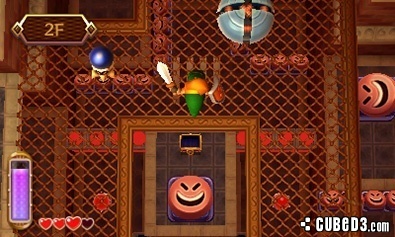
A concern upon the announcement that A Link Between Worlds would be set in the same map as A Link to the Past was that of still having enough to do outside of conquering dungeons and, as such, whether said dungeons would suffice if overworld content was lacking. With a gratefully large number of them to explore, and it being equally pleasing that each dungeon yields engaging schemes and themes to ensure sustained enjoyment, the out-of-dungeon portions and extras of the game are thankfully existent and will delight fans, too. Side-questing is perhaps lacking when compared to other titles, but what is here is more than satisfying; whether it is searching the whole land for critters in a bid to power up equipment, competing in mini-games to win pieces of heart and those now-more-necessary-than-ever rupees (thanks to the item rental system), or competing in battle trials against hordes of enemies to test the might of the hero. StreetPass is even put to use to fight against replicas of Links from other players' games and to attempt to achieve a number of accomplishments through these engagements. It's unfortunate that the Nintendo Network wasn't employed to allow users to maximise opportunities to battle other players or friends, however.
Familiar Legend of Zelda players are unlikely to find too much trouble in getting through A Link Between Worlds, and bosses aren't anything completely out of the ordinary or overly difficult; there is much that has been seen before, which, on one hand, is great for the nostalgia, but on the other, it can mean a real lack of challenge. The Hero Mode that can be unlocked serves to deliver the tests many fans will crave, but some might have preferred the option to select this from the start.
Where 3D Legend of Zelda games have, arguably, relied too heavily on the same formula for too long and are in need of new ideas, A Link Between Worlds benefits from doing away with tedious modes of transportation and playing frustrating instruments that were apparent in the past two top-down-like main entries on the Nintendo DS, and proves that 2D Zelda succeeds when it sticks to what it knows best, whilst also bringing in ideas that are ideal and much-needed, with a key factor being in the form of creating a more non-linear game. With this original style of Zelda getting back on the right track, hopefully, now, the 3D iterations can take a couple of leaves from A Link Between Worlds' book and really reinvigorate this unparalleled series once more.
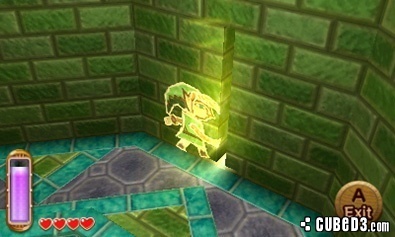
Cubed3 Rating
Exceptional - Gold Award
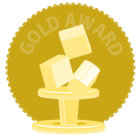
No touch or motion controls that don't always do what is asked of them; no microphone gimmicks to blow hundreds of times into incredibly infuriating wind instruments; no involuntary hand-holding that removes the need to explore and continuously breaks up the flow of the game—A Link Between Worlds is the very definition of what classic top-down Legend of Zelda games should always be about. It is clear that 2D Zelda thrives and is at its ultimate best when it sticks to its roots, and A Link Between Worlds does exactly that, and more. This is the return to form that long-time fans have been wishing for in the classic 2D format for the Zelda franchise for many years; it is the greatest entry in a very long time.
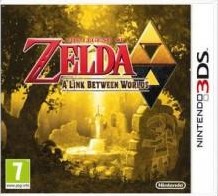
![]() 9/10
9/10
![]() 9/10
(10 Votes)
9/10
(10 Votes)
 Out now
Out now  Out now
Out now  Out now
Out now  Out now Also on
Out now Also on 
Comments
Comments are currently disabled

 Sign In
Sign In Game Details
Game Details Subscribe to this topic
Subscribe to this topic Features
Features





 Top
Top

